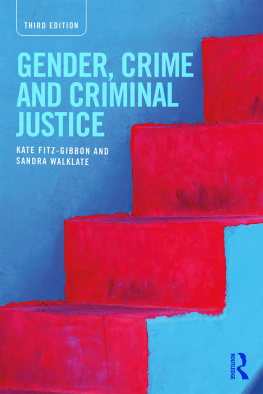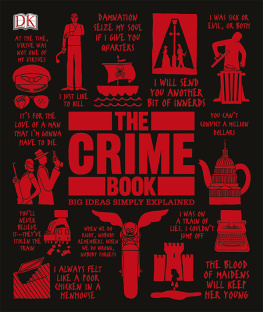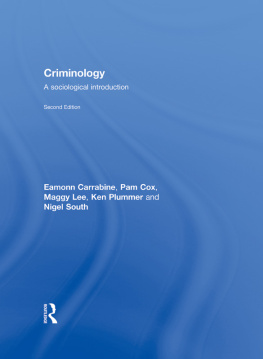Evolution and Crime
Human physique and behaviour have been shaped by the pressures of natural selection. This is received wisdom in all scientifically informed circles. Currently, the topic of crime is rarely touched upon in textbooks on evolution and the topic of evolution rarely even mentioned in criminology textbooks. This book for the first time explores how an evolution-informed criminology has clear implications for enhancing our understanding of criminal law, crime and criminal behaviour.
This book is directed more towards students of criminology than students of evolution. It is suggested that there is scope for more collaborative work, with criminologists and crime scientists exposed to Darwinian thought having much to gain. What is suggested is simply that such thinking provides a fresh perspective. If that perspective yields only a fraction of the understanding when applied to crime that it has elsewhere in science, the effort will have been worthwhile.
The authors attempt to provide a modest appraisal of the potential contribution that a more welcoming approach to the evolutionary perspective would make to criminology; both theoretically (by expanding understanding of the complexity of the origins of behaviour labelled criminal) and practically (where the evolutionary approach can be utilised to inform crime control policy and practice). An evolutionary lens is applied to diverse criminological topics such as the origins of criminal law, female crime, violence, and environmental factors involved in crime causation.
Jason Roach is a Chartered Psychologist and Reader in Crime and Policing at the University of Huddersfield. He has worked for the UK Home Office, taught at the Crime Reduction College and worked in various mental health settings. He has published work on various criminological topics including criminal investigative practice, homicide and violent crime, terrorism and Offender Self-Selection.
Ken Pease is a Chartered Forensic Psychologist and currently Visiting Professor and Fellow of University College London and Visiting Professor at the University of Loughborough.
Crime Science Series
Edited by Richard Wortley
University College, London
Crime science is a new way of thinking about and responding to the problem of crime in society. The distinctive nature of crime science is captured in the name.
First, crime science is about crime. Instead of the usual focus in criminology on the characteristics of the criminal offender, crime science is concerned with the characteristics of the criminal event. The analysis shifts from the distant causes of criminality biological makeup, upbringing, social disadvantage and the like to the near causes of crime. Crime scientists are interested in why, where, when and how particular crimes occur. They examine trends and patterns in crime in order to devise immediate and practical strategies to disrupt these patterns.
Second, crime science is about science. Many traditional responses to crime control are unsystematic, reactive and populist, too often based on untested assumptions about what works. In contrast crime science advocates an evidence-based, problem-solving approach to crime control. Adopting the scientific method, crime scientists collect data on crime, generate hypotheses about observed crime trends, devise interventions to respond to crime problems, and test the adequacy of those interventions.
Crime science is utilitarian in its orientation and multidisciplinary in its foundations. Crime scientists actively engage with front-line criminal justice practitioners to reduce crime by making it more difficult for individuals to offend, and making it more likely that they will be detected if they do offend. To achieve these objectives, crime science draws on disciplines from both the social and physical sciences, including criminology, sociology, psychology, geography, economics, architecture, industrial design, epidemiology, computer science, mathematics, engineering and biology.
1. Superhighway Robbery
Graeme R. Newman and Ronald V. Clarke
2. Crime Reduction and Problem-oriented Policing
Edited by Karen Bullock and Nick Tilley
3. Crime Science
New Approaches to Preventing and Detecting Crime
Edited by Melissa J. Smith and Nick Tilley
4. Problem-oriented Policing and Partnerships
Implementing an evidence-based approach to crime reduction
Karen Bullock, Rosie Erol and Nick Tilley
5. Preventing Child Sexual Abuse
Stephen Smallbone, William L. Marshall and Richard Wortley
6. Environmental Criminology and Crime Analysis
Edited by Richard Wortley and Lorraine Mazerolle
7. Raising the Bar
Preventing aggression in and around bars, pubs and clubs
Kathryn Graham and Ross Homel
8. Situational Prevention of Organised Crimes
Edited by Karen Bullock, Ronald V. Clarke and Nick Tilley
9. Psychological Criminology
An integrative approach
Richard Wortley
10. The Reasoning Criminologist
Essays in Honour of Ronald V. Clarke
Edited by Nick Tilley and Graham Farrell
11. Patterns, Prevention and Geometry of Crime
Edited by Martin A. Andresen and J. Bryan Kinney
12. Evolution and Crime
Jason Roach and Ken Pease
First published 2013
by Routledge
2 Park Square, Milton Park, Abingdon, Oxon, OX14 4RN
Simultaneously published in the USA and Canada
by Routledge
711 Third Avenue, New York, NY 10017
Routledge is an imprint of the Taylor & Francis Group, an informa business
2013 Jason Roach and Ken Pease
The right of Jason Roach and Ken Pease to be identified as authors of this work has been asserted by them in accordance with sections 77 and 78 of the Copyright, Designs and Patents Act 1988.
All rights reserved. No part of this book may be reprinted or reproduced or utilised in any form or by any electronic, mechanical, or other means, now known or hereafter invented, including photocopying and recording, or in any information storage or retrieval system, without permission in writing from the publishers.
British Library Cataloguing in Publication Data
A catalogue record for this book is available from the British Library
Library of Congress Cataloging-in-Publication Data
Roach, Jason, 1969-
Evolution and crime / Jason Roach and Ken Pease.
pages cm
1. Criminal anthropology. 2. Criminology. 3. Human evolution. 4. Criminal behaviorGenetic aspects. 5. Evolution (Biology) and the social sciences. I. Pease, K. (Kenneth) II. Title.
HV6035.R63 2013
364.24dc23
2012041258
ISBN: 978-1-84392-392-3 (hbk)
ISBN: 978-1-84392-391-6 (pbk)
ISBN: 978-0-203-10108-7 (ebk)
The physique and behaviour of all organisms, including humans, has been shaped by the pressures of natural selection. This is received wisdom in scientifically informed circles. Currently, the topic of crime is rarely touched upon in textbooks on evolution and the topic of evolution rarely mentioned in criminology textbooks. This book represents an attempt to present, in a form accessible to social science students with no background in the biological sciences, the ways in which a Darwinian perspective has rich potential in enhancing our understanding of the criminal law, crime and criminality.







